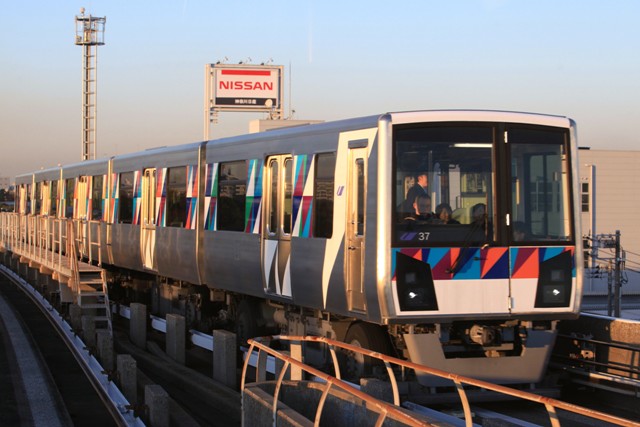Set 43 of the EMU 2000 series travels on the Kanazawa seaside line
I recently visited the Kanazawa seaside line for the first time since 2012. What has changed on this automated guideway transit (AGT) line in the last 7 years?
The biggest change was its rolling stock. All the sets of the old EMU 1000 series were retired from the track in 2014. Instead, the new EMU 2000 series has become the sole model on the line. The 2000 series was first introduced in 2011 on the line. A total of 16 sets (from set 31 to set 46) were built by J-TREC (former Tokyu Sharyo). One set is composed of 5 motor cars. The body of the 2000 series is stainless steel, which is different from the previous 1000 series.
Incidentally, the Kanazawa seaside line is a rubber-tired AGT transportation system in the southern part of Yokohama City, Kanagawa Prefecture, about 40 kilometers south of Tokyo. It was opened in 1989 by Yokohama seaside Line Company. Connecting Shin-Sugita on the JR East Negishi line and Kanazawa-hakkei on the Keikyu main line, its operating length is 10.8 kilometers. The electric system is 750 V DC. ATO (Automatic Train Operation) system is adopted, so there is no driver and conductor on the train.
Sitting on the front seat, the passenger can enjoy the view ahead. I specifically like a marine view between Hakkei-jima and Nojima-koen stations. Same as the Yurikamome line on the coast of Tokyo Bay, the Kanazawa seaside line is the urban marine resort route in Yokohama City.
The biggest change was its rolling stock. All the sets of the old EMU 1000 series were retired from the track in 2014. Instead, the new EMU 2000 series has become the sole model on the line. The 2000 series was first introduced in 2011 on the line. A total of 16 sets (from set 31 to set 46) were built by J-TREC (former Tokyu Sharyo). One set is composed of 5 motor cars. The body of the 2000 series is stainless steel, which is different from the previous 1000 series.
Incidentally, the Kanazawa seaside line is a rubber-tired AGT transportation system in the southern part of Yokohama City, Kanagawa Prefecture, about 40 kilometers south of Tokyo. It was opened in 1989 by Yokohama seaside Line Company. Connecting Shin-Sugita on the JR East Negishi line and Kanazawa-hakkei on the Keikyu main line, its operating length is 10.8 kilometers. The electric system is 750 V DC. ATO (Automatic Train Operation) system is adopted, so there is no driver and conductor on the train.
Sitting on the front seat, the passenger can enjoy the view ahead. I specifically like a marine view between Hakkei-jima and Nojima-koen stations. Same as the Yurikamome line on the coast of Tokyo Bay, the Kanazawa seaside line is the urban marine resort route in Yokohama City.
Set 37 of the EMU 2000 series travels on the Kanazawa seaside line
Official information about the Kanazawa seaside line:
Official information about the EMU Yokohama Ne Transit 2000 series (in Japanese):

